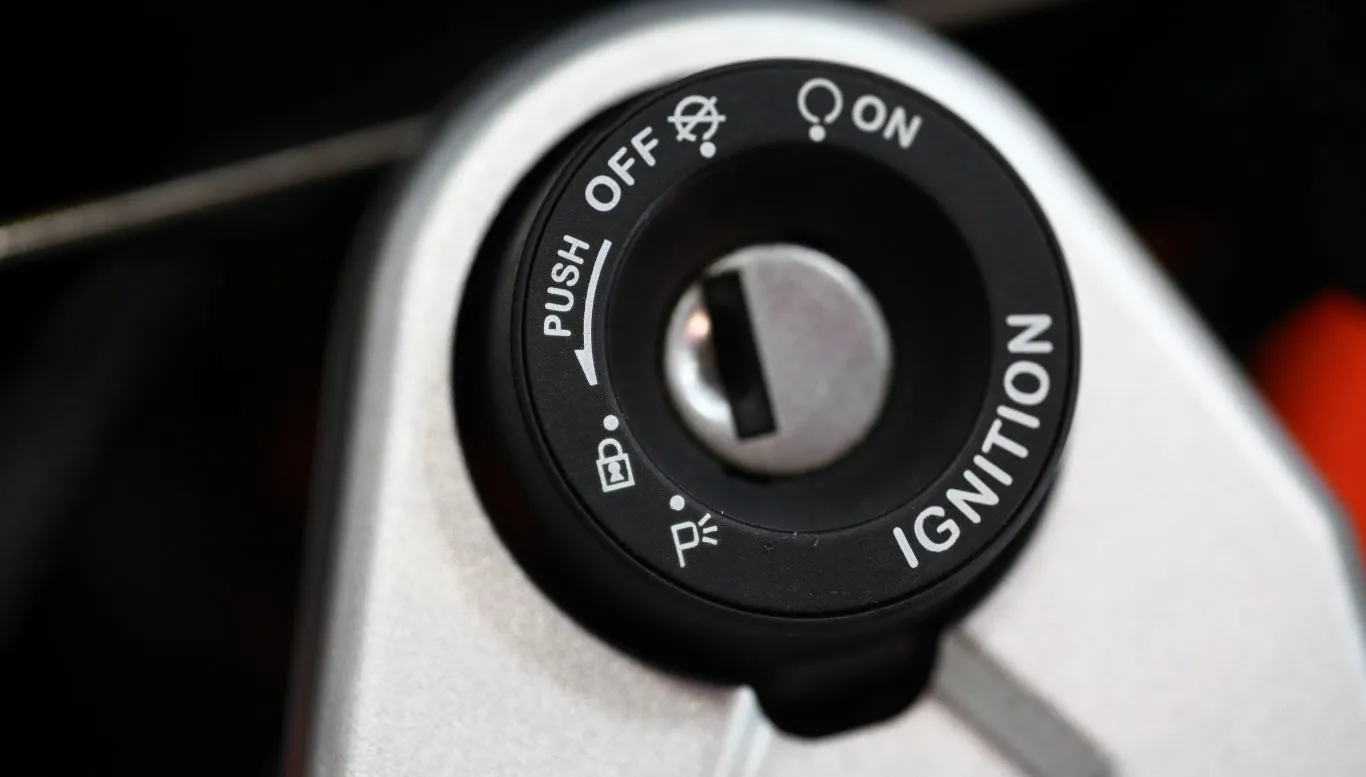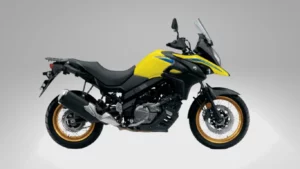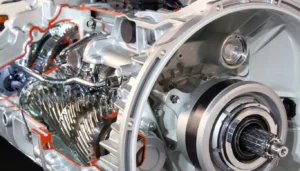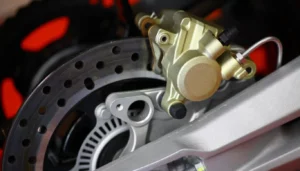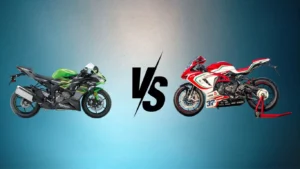Motorcycles, much like their four-wheeled counterparts, can experience common ignition system failures. These issues can leave you stranded or impede the performance of your beloved ride. However, by understanding these problems and their fixes, you can keep your motorcycle in pristine condition, ready for any adventure.
But fear not! This article is designed for riders like you, aimed at unraveling the common ignition system failures in motorcycles, and, most importantly, how to fix them. Equipped with this knowledge, you can confidently handle minor hiccups and keep your ride in superb condition. Take a deep breath and let’s dive into the world of ignition systems.
Introduction to Motorcycle Ignition Systems
To kick-start your adventure on the road, your motorcycle heavily relies on its ignition system. This critical component ensures that your engine comes to life by igniting a mixture of air and fuel. A proper understanding of this system can aid in determining any malfunctions and consequently applying appropriate interventions when necessary.
Components of the Ignition System
Your motorcycle’s ignition system is composed of a number of crucial elements. These mainly include the ignition switch, starter, spark plugs, and ignition coil. It’s important to know that these components function harmoniously to ignite the air-fuel mixture in the engine’s combustion chamber. This produces the power needed to operate the motorcycle.
- Ignition Switch: The ignition switch is the component that initiates the ignition process.
- Starter: The starter is responsible for turning over the engine and getting it ready for ignition.
- Spark Plugs: Spark plugs are responsible for igniting the air and fuel mixture in the engine.
- Ignition Coil: The ignition coil is essential for creating the high voltage required for ignition.
Understanding Ignition System Operation
Understanding the operation of the ignition system is beneficial for efficient troubleshooting. It all begins when you turn on the ignition switch. This action allows current to flow from the battery to the ignition coil, which enhances the voltage level. The high voltage travels to the spark plugs, triggering a spark for combustion. It’s this combustion that drives the engine forward, allowing you to hit the road.
Understanding the Importance of a Reliable Ignition System
Your motorcycle’s ignition system plays a crucial role in its operation. It’s responsible for initiating the engine combustion process, enabling your bike to start and keep running. Therefore, understanding the importance and the workings of this system is vital for maintaining your motorcycle’s performance and longevity.
Ensuring Smooth Start-Ups
The ignition process begins as soon as you turn the key. A dependable ignition system ensures that your bike gets off to a quick and smooth start, reducing the wear and tear on your engine and starter motor. With an unreliable system, you might find yourself left stranded with a motorcycle that won’t start.
Maximizing Fuel Efficiency
A properly functioning ignition system optimizes your motorcycle’s fuel efficiency because it initiates precise, timely combustion. On the flip side, a failing ignition system can lead to incomplete or irregular combustion, resulting in reduced fuel efficiency and increased emissions.
Maintaining Optimal Performance and Power
- Spark timing: The ignition system controls the exact moment the spark plug fires, also known as spark timing. This influences the power output and efficiency of your motorcycle.
- Reliable firing: Consistent, reliable firing of the spark plug is vital for optimum engine performance. Errors here can cause power drops and inconsistent acceleration.
Extending the Life of Your Motorcycle
Lastly, a healthy ignition system extends the life of your motorcycle. As ignition faults can lead to serious engine damage, maintaining your ignition system is cheaper than replacing an entire engine. Regular checks and proper maintenance of the ignition system can prevent costly repair bills in the long run.
Signs of Ignition System Failures in Motorcycles
When your motorcycle’s ignition system isn’t operating correctly, it shows in its performance. However, the signs might be subtle and difficult to spot for untrained eyes. Being aware of these indicators can be the difference between a quick fix and a costly repair, or worse, being stranded in the middle of nowhere. Here are some key signs to watch for and respond to proactively.
Difficulty in Starting the Motorcycle
A motorcycle’s inability to start is often a straightforward indicator of an ignition system failure. This could be due to a faulty spark plug, an unresponsive starter motor, or issues with the ignition coil. It’s important to not dismiss starting difficulties as just a ‘bad day’ for your bike.
Intermittent Power Loss While Riding
Ever experienced a sudden loss of power during your ride, especially at high speeds? That’s a red flag you can’t afford to ignore. This could be due to a weak spark from the spark plug, problems with the ignition coil, or faults in the CDI (Capacitor Discharge Ignition) unit.
- Weak spark: This can be diagnosed by visually examining the spark. A weak or yellow spark suggests an issue that needs addressing.
- Ignition coil issues: Problems with the coil can lead to intermittent spark, causing power loss. An ignition coil tester can help diagnose this.
- CDI unit faults: If the above components are functioning well, the issue might lie in the CDI unit. A professional mechanic should evaluate this further.
Poor Fuel Economy
Noticed your fuel consumption rates shoot up suddenly? This could mean a spark plug failing to ignite the fuel efficiently, causing unnecessary wastage. This not only impacts your wallet but also your motorcycle’s performance and the environment.
Substandard Acceleration
Irregularities in the acceleration process of your motorcycle might be a sign of an underlying ignition system failure. This can be due to faulty spark plugs or issues with the timing mechanisms within the ignition system.
Unusual Noises during Startup or Idle
If your bike makes strange noises during startup or while idling, it’s possible that the ignition system is failing. Unexplained clicks, sputters, or popping sounds should be investigated promptly.
Remember, prevention is better than cure. Recognizing these signs early can help you avoid long-term damage to your motorcycle’s ignition system.
Common Causes of Motorcycle Ignition System Failures
Sure, tackling the section titled “Common Causes of Motorcycle Ignition System Failures,” this is how it would look:
Motorcycle ignition failures, as much a drag as they are, can happen for a smorgasbord of reasons. Dealing with them swiftly can mean being back on the road before you know it. So, let’s dive deep into some prevalent causes, shall we?
Faulty Spark Plugs
Quite possibly the most frequent culprits, your motorcycle’s spark plugs could fail due to build-up of carbon deposits, or because they’ve just worn out over time. When a spark plug fails, it can’t ignite the fuel in the engine, disrupting the entire ignition process.
- Cause: Continuous use of low-grade fuel often leads to carbon deposits.
- Solution: Regular inspection and cleaning, or replacement if needed.
Deteriorating Ignition Coil
An ignition coil acts as the powerhouse, transforming low-voltage electricity into thousands of volts necessary to create a spark. Over time, constant temperature fluctuations can lead to the coil’s insulation breaking down, affecting its functionality.
- Cause: Aging and exposure to extreme temperatures.
- Solution: Regularly check for cracks, corrosion, or other signs of damage and replace if necessary.
Malfunctioning CDI Box
The Capacitor Discharge Ignition (CDI) box is your motorcycle’s electronic brain. It controls the spark’s timing, and if it fails, it can lead to a series of ignition problems.
- Cause: Electrical surges, or simply old age.
- Solution: Regular testing to ensure functionality and replacement when required.
Starting Motor Issues
The starter motor is responsible for turning over the engine when you fire up your bike. A problem with the starter motor can mimic an ignition system problem, as it may prevent the engine from starting.
- Cause: Wear and tear, loose wiring connections.
- Solution: Regular inspections to identify any early signs of failure and prompt repairs.
Diagnosing Ignition System Problems in your Motorcycle
Detecting and addressing ignition system issues promptly can ultimately save you from significant inconvenience, possible danger, and often steep repair costs. Therefore, knowing how to accurately diagnose motorcycle ignition problems is critical. But you don’t have to be a professional mechanic to troubleshoot these issues—several symptoms and examinations can guide you to the root of the problem.
Conducting a Preliminary Inspection
Before diving into complex diagnostics, begin with a general examination. Check the motorcycle’s ignition switch, wires, and ignition coil for visible signs of wear or damage. Any broken, frayed, or disconnected wires can cause ignition difficulties.
Testing the Spark Plugs
Spark plugs play a pivotal role in your bike’s ignition system. Therefore, if you’re experiencing issues, it’s likely correlated to them. Remove and visually inspect each spark plug. Be on the lookout for any discoloration, deposits, or worn electrodes as these can negatively affect the ignition system’s functionality.
Observing the Ignition Coil
The ignition coil transforms the battery’s low voltage into thousands of volts necessary to create a spark. When it starts to degrade, it can cause a range of ignition-related problems. Testing it with a multimeter can help verify its condition.
- Ensure the ignition coil is disconnected from the bike’s electrical system.
- Set your multimeter to the 200 Ohms range.
- Connect the multimeter leads to the ignition coil terminals.
- If readings are significantly higher or lower than the manufacturer’s specifications, the ignition coil may need replacing.
Evaluating the Ignition Module
The ignition module or the CDI box controls the timing and intensity of the spark. If you suspect a problem with this component, you may need to seek assistance from a professional due to the sophistication of the diagnostic tools required.
Spark Plug Issues and Troubleshooting
One of the most common culprits behind ignition system failures in motorcycles is issues related to spark plugs. This key component is responsible for igniting the fuel-air mixture in the engine. Over time, these plugs may become worn out, dirty, or otherwise damaged, which can cause a multitude of issues ranging from rough idling and decreased power to difficulty starting your bike. Recognizing the signs of spark plug issues and understanding how to troubleshoot these problems is vital to keep your motorcycle running smoothly.
Indications of Spark Plug Problems
There are a few telltale signs that your spark plugs may be experiencing issues. Difficulty starting the bike, a noticeable decrease in fuel efficiency, misfires, and unstable idling are all potential signs of spark plug failure. Furthermore, if you notice an increase in exhaust emissions, it might be the result of a rich mixture from a problematic spark plug.
Visual Inspection of Spark Plugs
An initial assessment can begin with a visual inspection of your spark plugs. Search for any signs of physical damage like cracks or burns. Observe their color as well. A normal spark plug will have a light tan color, but a spark plug in a rich or lean condition will be black or white respectively.
Checking Spark Plug Gaps
The correct spark plug gap is crucial for proper ignition. An incorrect gap may result in poor performance and can also lead to damage. You can utilize a feeler gauge to measure the spark plug gap and compare it with the manufacturer’s specifications.
Replacing Damaged Spark Plugs
- First, ensure the engine is cool to avoid damaging the threads in the cylinder head.
- Next, clean the area around the spark plug to prevent any dirt or debris from falling into the cylinder once the spark plug is removed.
- Utilize a spark plug socket to unscrew and remove the old spark plug.
- Before installing the new spark plug, check the gapping and adjust if necessary. You can use a specialized spark plug gapping tool for this task.
- With the new spark plug ready, carefully screw it into place, then tighten it with the socket.
Preemptive Measures for Spark Plug Issues
Maintaining good motorcycle habits can significantly prolong the life of your spark plugs. Avoid revving the engine unnecessarily, especially when it’s cold. Regularly check spark plug gaps, and replace plugs according to your bike manufacturer’s recommendations. Also, good quality fuel can contribute to the efficiency and lifespan of your spark plugs.
Testing and Replacing the Ignition Coil
If your motorcycle’s ignition system is grounded by a failing ignition coil, it impacts the ability of the spark plugs to ignite the air-fuel mixture in the combustion chambers, leading to a series of performance issues. This guide will walk you through the steps for diagnosing, testing, and replacing your motorcycle’s ignition coil, ensuring that your ride continues to deliver smooth and reliable performance.
Signs of a Bad Ignition Coil
While ignition coil issues can be tricky to diagnose due to their intermittent nature, there are a few signs to watch out for. These include engine misfires, backfiring, a reduction in power, and poor fuel economy. If your motorcycle is displaying these symptoms, it’s wise to inspect the ignition coil.
How to Test the Ignition Coil
- Disconnect the spark plug lead and any other wires connected to the coil.
- Use a multimeter set to ohmmeter settings to check the coil’s resistance levels. Always refer to your motorcycle’s manual for the correct readings for primary and secondary resistance.
- If the readings are outside their specified range, the coil is likely defective and needs to be replaced.
How to Replace a Failing Ignition Coil
Replacing a faulty ignition coil typically involves disconnecting its wires, removing fasteners to dislodge it from its mount, and installing a new coil in place. Always refer to your motorcycle’s specific service manual for detailed instructions to ensure correct installation.
Preventive Measures
To keep your ignition coil in top shape, make sure to routinely check its connections, clean them as necessary, and keep them dry. It’s also prudent to inspect your motorcycle’s plug cap for signs of damage or wear, as these can lead to spark issues that in turn put undue stress on the coil.
Addressing Problems with the Starter Motor
Oftentimes, your motorcycle might be giving you trouble not due to an issue with the ignition system’s more complex components like spark plugs or coils, but due to a problem with a seemingly simple but essential part – the starter motor. Familiarizing yourself with potential starter motor problems is crucial in this pursuit of understanding ignition system failures.
Signs of Starter Motor Problems
Usually, the first sign of a faulty starter motor is the motorcycle refusing to start or starting only after several attempts. You might also hear a clicking sound when turning the ignition, indicating a malfunctioning starter motor. Other signs could include a free-spinning sound or the starter motor getting visibly overheated.
Causes of Starter Motor Problems
- Worn out brushes: The brushes in the motor could be worn out or sticking in the brush holder, resulting in inadequate electric current.
- Bent armature: The armature of the starter motor could be bent, resulting in the armature rubbing against other parts of the motor.
- Loose wire: A loose or broken wire or connection could hinder the proper functioning of the starter motor.
Fixing Starter Motor Problems
Once you’ve determined the reason behind a faulty starter motor, fixing it can be as simple as tightening a loose wire connection. In case of a worn-out brush or bent armature, however, replacing the faulty parts might be necessary. The step-by-step process for this repair work might require specialist knowledge and tools, and professional assistance might be advisable.
Prevention Strategies for Starter Motor Failures
Regular inspection of the starter motor and immediate attention to signs of malfunction can help prevent serious starter motor problems. Proper maintenance is key to ensuring the longevity and performance of your motorcycle’s ignition system. This includes checking the state of different components regularly and replacing anything that seems faulty or worn out.
Understanding the Role of the CDI (Capacitor Discharge Ignition)
The Capacitor Discharge Ignition (CDI) system is a crucial element of the motorcycle’s ignition system. Operating as an electronic ignition module, the CDI box stores an electrical charge and releases it through an electric spark. This crucial process enables the spark plugs to ignite the fuel within the engine’s cylinders, kick-starting your engine. Failure of this CDI system could manifest as difficulties during start-up or inconsistent running of the bike.
The Functioning of a CDI System
The CDI box first pulls voltage from the motorcycle’s battery and holds onto this, like a small reservoir, until called upon to discharge this charge. This discharge occurs at a critical point within the engine’s cycle to spark the combustion needed for the engine. The CDI system is remarkable for its effectiveness and timing precision.
Signs of a Failing CDI Box
There are several signals that you might be dealing with a faulty CDI box. These can range from general difficulty in starting your bike to noticeable misfires and hiccups during rides, as well as performance inconsistency. Unexpected stalling may also occur as a result.
- Erratic Starting: One symptom of a problem with the CDI box is the bike having trouble starting or failing to start at all, due to the lack of charge being stored or released properly.
- Poor Performance: Misfires in the ignition, rough idling, and power loss during acceleration are all signs of a malfunctioning CDI system.
- Unexpected Stalling: Many motorcycle riders report sudden stalling as a problem tied to the CDI box.
Addressing a Failing CDI Box
If you suspect that the CDI box might be at fault, it’s recommended to consult with a certified mechanic or implement professional diagnostic tools to test this component. Replacing a faulty CDI box can bring about an immediate improvement in your motorcycle’s functionality and performance.
Upgrading to a High-Performance Ignition System
If you’re someone who thrives for peak performance and high speed in your motorcycle, consider upgrading your ignition system. A high-performance ignition system offers numerous benefits including optimized fuel burn, improved throttle response, and heightened power output. But how do you go about this upgrade? Let’s dig into it.
How to Choose a High-Performance Ignition System
When it comes to selecting a high-performance ignition system, you need to understand your motorcycle’s needs. Evaluate factors such as motorcycle model, engine size, and performance goals. Research brands and product reviews, and consult with professionals if necessary.
Installing the High-Performance Ignition System
The process of installation can vary depending on the specific ignition system. It’s crucial to closely follow the manufacturer’s instructions. This step may require specialized tools and a certain level of mechanical skill. If you’re not confident in performing this task, it’s best to have a professional mechanic perform the installation for you.
The Impact of a High-Performance Ignition System
- Boosted engine performance: These systems can optimize the burn of the air-fuel mixture, improving performance and power output.
- Enhanced ignition reliability: High-performance components often resist wear and tear better than standard parts, promoting longer service life and lowering chances of ignition issues.
- Better fuel efficiency: By providing improved firing and ignition, it allows your engine to use fuel more efficiently, often resulting in increased mileage.
Caring for a High-Performance Ignition System
Even though high-performance ignition systems are designed to deliver superior function and longevity, they still require regular maintenance. Check your system regularly to ensure it’s in top working order, and promptly address any issues you identify. You should still follow a preventative maintenance schedule, checking parts like your spark plugs, ignition coil, and CDI box regularly.
Preventive Maintenance Tips for a Healthy Ignition System
Keeping your motorcycle’s ignition system running smoothly isn’t just about knowing how to identify and fix problems; it’s also about conducting regular preventive maintenance. This consistent attention can help you stay ahead of potential issues, saving both time and money in the long run. By taking specific steps and following the right maintenance practices, you can ensure that your motorcycle’s ignition system remains in top shape.
Regular Spark Plug Checks
Make it a habit to inspect your spark plugs routinely. Check for damage and ensure they’re not overly worn. Checking the gap on the spark plugs with a feeler gauge can also tell you if they’re functioning as they should, reducing the risk of misfires and poor fuel efficiency.
Ensure Electrical Connectors are Clean and Tight
Corrosion, dust and loose connections can compromise your ignition system’s performance. Regularly inspect and clean the electrical connectors, and tighten them as required. Use contact cleaner and a wire brush for cleaning, ensuring a good, strong connection every time.
Maintain Optimal Battery Health
Your motorcycle’s battery plays a crucial role in starting the engine and maintaining the bike’s overall performance. Regularly check the battery voltage, clean terminals, and ensure the battery is adequately charged at all times. It’s a good idea to replace the battery every 3-5 years, or as recommended by the manufacturer.
Follow the Maintenance Schedule
- Most motorcycle manufacturers provide a maintenance schedule in the user manual. Adhere to these tips and timelines to help prevent unexpected breakdowns.
- Regular oil changes should be prioritized as old oil can disable the starter motor over time.
- To ensure peak performance, check and replace the ignition coil and CDI box as the manufacturer advises.
Conclusion: Keeping Your Motorcycle Ignition System in Top Shape
So, you’ve journeyed with us through the complexities of your motorcycle’s ignition system, understanding its operation, identifying signs of trouble, and learning how to keep things running smoothly. By now, you should feel well-equipped to handle most ignition mishaps on the road, all while extending the lifespan of your bike.
Remember, prevention is better than cure. So, keep ensuring regular check-ups and maintenance for a robust ignition system. Let’s get you on the road with certainty, power, and a system that’s tuned for accommodating your love for riding. Safe and thrilling journeys await you!
